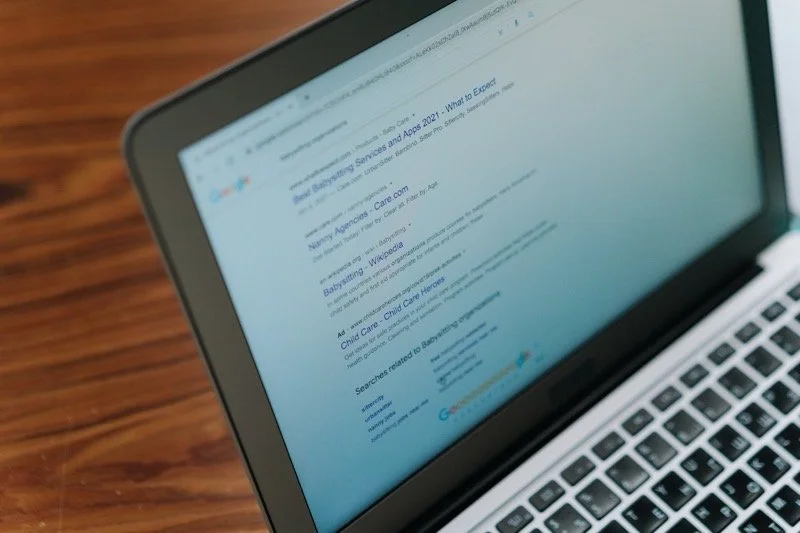Nonprofit Storytelling: 4 Types of Blog Posts to Help You Get Started
Writing a blog post can be daunting. Most of us start the process by staring blankly at the blinking cursor on a Google Doc, making up dozens of excuses to walk away from the computer, and then scrambling at the last minute to write coherently. This is not an ideal process.
If you’re trying to figure out how to improve your content strategy or find additional ways to craft interesting blog content, try adding some variety to your posting. Here are several types of blog posts worth writing—and how to start writing them:
1. “How To” Posts
This post type is exactly what it sounds like: “how to...” do something. It’s an explainer post or a guide, a mechanism to share your expertise and provide value to your website visitor. Part of the merit of this post type is the title structure, “How to” is how someone would pose a search query to Google, Bing, or other search engines. Having “How to” in your title means that your post will be indexed as relevant to related queries—assuming that the rest of your headline is relevant to the rest of the search query.
For example, “How to write a blog post” is an excellent blog post title because it’s likely that someone will search for “How to write a blog post.” However, if someone searches “How to change a broken lightbulb,” my post won’t show up because even though I have “How to” in the subject line, the rest of my title is irrelevant to the query.
Now that we understand the value of this type of post, here’s how to write one:
The title. Lead with “How to,” and then make the rest of your post title very specific: “How to Save Water on World Water Day,” “How to Responsibly Recycle Household Electronics,” etc.
Introduce the concept. Use the first paragraph or two to introduce your piece by highlighting the problem or the reason why your topic is important (and define any necessary words or acronyms before you dig in), how you relate to it and the reader, and a brief overview of how you solved the problem.
Break it down. Break down the exact steps to solve the issue from start to finish. Make sure that you emphasize each stage or section—especially if it’s a longer post. By adding emphasized headlines to each section, you make it easier for the reader to scan, and you also make it clear to search engines crawling your site.
Closing and Call-to-Action: After the final step, wrap up your post with a quick summation and, if possible, a call to action. Of course, you don’t have to end every post with a “Donate now!” button, but you could do something like asking for people to respond to a question in the comments, read a relevant article or download a white paper from your site, or subscribe to your email list for new blog updates (frame this as a value-add to the post and not just a mechanism to build your list).
2. News-Relevant Posts
When something is happening in the news that you or your organization has a relevant perspective on, this is the type of blog post for you. Sometimes called “newsjacking,” these posts function as soft op-eds—content that conveys a point of view but doesn’t count as advocative. For example, if your organization offers mental health services, you might write a post about coping with loss following a celebrity’s death. The content is timely, relevant, and valuable to the reader, making it both searchable and interesting.
To get started, you might link to the news-related content to provide context and relevance, but you don’t have to. Start by:
Crafting a strong headline utilizing keywords you’d find in the news. People see headlines before clicking through to your article, so make it catchy; make it count. But also make it clear that your post has to do whatever you’re capitalizing on in the news. This will improve your search ranking.
Describing how you or your organization fit into the context of the news item. As exemplified earlier, this may become self-evident if you’re a mental healthcare provider offering advice on grief during a celebrity death. However, if it’s unclear how your programs or POV square with the news, take a paragraph to clarify it. Also, include links to relevant news articles or other explainers if the news item you’re referencing requires additional context.
Telling the reader what they need to know or do next. This doesn’t have to be a direct call-to-action, like an email sign-up or a donation, but let the reader have something that helps them contemplate the issue and how they should resolve it (or understand how others are resolving it).
Close it out. Write your closing paragraph summarizing the issue’s importance, how you feel it should be resolved, and final details or action steps for the reader.
Consider this additional example from a recent event:
During a health crisis when many companies required their teams to work from home, a nonprofit known for its work in technology capacity-building published an article to help employees work effectively from home and another piece on how employers can set their employees up for success. Both articles focus on the technology and skills required to be effective.
3. Listicles
If you’ve ever visited Buzzfeed, you’ve read a listicle. Listicles are articles that organize content into lists (e.g., “Top 5 Reasons to Read XYZ Book,” “3 Reasons to Reset Your Computer Every Year,” etc.). These articles are popular because they are easy to read and digest. Content should be short, to the point, and provide quick tips or reasons for someone to read or skim through quickly.
Start with a specific headline. At this point, tip #1 should go without saying. Make your headline clear about what the reader will get from the post.
Your intro paragraph is the set-up—what’s the topic, why does it matter, who is this relevant for, and what will your list include (e.g., resources or links to other tools/articles, examples, arguments, etc.). Maybe have a statistic or a quote to cement the topic. Because the meat of your post will be the listed items, you’ll want the intro to take up no more than two paragraphs (and one is preferable). It should merely set up the reasoning for why your post is important.
Your list. Count it down, count it up, just count it. Write the item number (#1), the headline or central point for the item, and then start writing your supporting paragraph underneath. Your product will look something like this blog post template.
A short closing. Similar to the intro, the closing should be brief. The reader came for your list, so close it out with a concise summation and include a call-to-action, like asking them to respond or add to your list in the comments.
4. Cornerstone Content
If you’re familiar with search engine optimization (SEO) or any SEO plug-ins for your website, you may have noticed a button labeled “cornerstone” content. Cornerstone content is foundational to your work. It’s long and in-depth, often written using several thousand words vs. a regular blog post which would typically be around 500-600. It is long-form, like a read-out on an important piece of research or an impact report that influences your strategy and approach for years to come. Consider your cornerstone content the one article on a given subject that anyone would need to read to understand.
Because of the length and the amount of work that typically goes into a cornerstone piece, you will repeatedly reference and link back to it, signaling to search engines that your content is important and authoritative on a given topic.
Here’s how to get started:
A headline that captures what the topic is. This might also incorporate categorical adjectives like “definitive,” “complete,” or “total” (e.g., “The Definitive Guide to Writing a Blog Post”).
A descriptive introduction to the topic, why it’s important, who it’s important to, and what the rest of the post will share. The intro paragraph will be reminiscent of your college thesis: it will describe your topic in detail and then your main point of view in summation before laying out each point.
The body describes each point in detail. Use plenty of links (bonus points for sharing links to other articles on your site), background details, and examples. This is your opportunity to describe the topic and your point of view entirely.
A closing that sums everything up—and may include a call-to-action. Now that you’ve laid everything out: the problem, the solution, your findings or experience, and some lingering or outstanding questions—what is/is the main takeaway(s)? Is there anything that you think the reader should do next?
Whenever you’re writing any blog post, it’s important to remember to include some graphics, pull quotes, or videos to liven up the piece. Likewise, you must include these elements to maintain the reader’s interest when writing a cornerstone piece. For example, use relevant photos from your work, design a quote card from a statistic you referenced, or embed a short video explaining one of your points.






